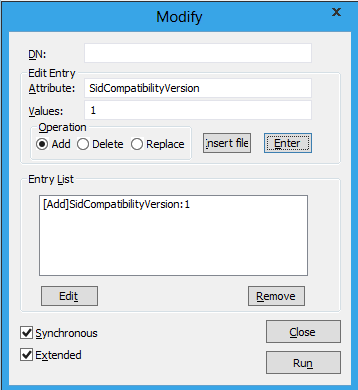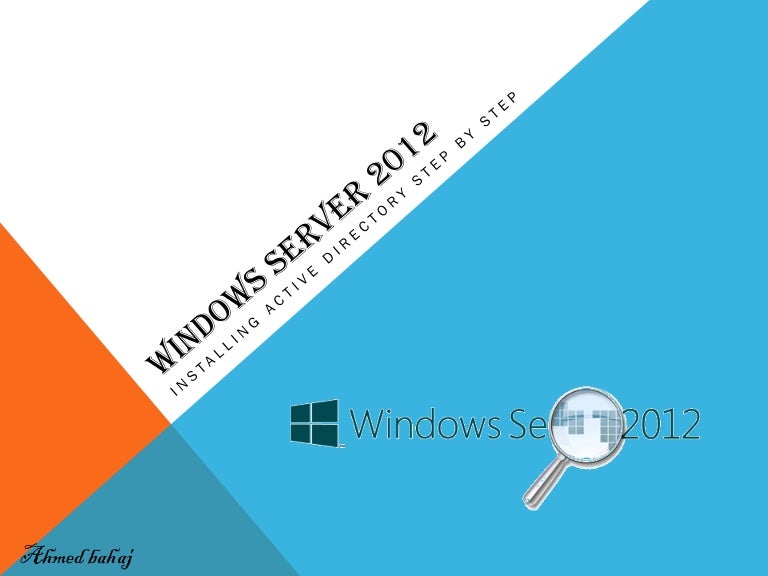

- ACTIVE DIRECTORY DOMAIN SERVICES SERVER 2012 INSTALL
- ACTIVE DIRECTORY DOMAIN SERVICES SERVER 2012 UPGRADE
- ACTIVE DIRECTORY DOMAIN SERVICES SERVER 2012 WINDOWS
Or you can leave the configuration file empty, which allows the system to automatically fill in the information.
ACTIVE DIRECTORY DOMAIN SERVICES SERVER 2012 WINDOWS
The process of cloning involves creating a copy of an existing virtual domain controller, authorizing the source domain controller to be cloned in AD DS, and running Windows PowerShell cmdlets to create a configuration file that contains detailed promotion instructions (name, IP address, Domain Name System servers, and so on). You can promote a single virtual domain controller by using the domain controller promotion interface in Server Manager, and then rapidly deploy additional virtual domain controllers within the same domain, through cloning. Virtualization that just works Rapid deployment with cloningĪD DS in Windows Server 2012 allows you to deploy replica virtual domain controllers by “cloning” existing virtual domain controllers.
ACTIVE DIRECTORY DOMAIN SERVICES SERVER 2012 UPGRADE
The following sections describe how AD DS in Windows Server 2012 addresses these emerging needs.įor more information about installing AD DS, see Deploy Active Directory Domain Services (AD DS) in Your Enterprise and Upgrade Domain Controllers to Windows Server 2012. These hybrid models will increase the importance, visibility, and emphasis around security and compliance, and they will compound the already complex and time-consuming exercise of ensuring that access to corporate data and services is appropriately audited and accurately expresses the business intent. New hybrid infrastructures will emerge, and it is essential that AD DS support the needs of these new and unique deployment models that include services hosted entirely in the cloud, services that comprise cloud and on-premises components, and services that remain exclusively on the premises. The adoption of cloud computing, however, will not occur overnight, and migrating suitable on-premises workloads or applications is an incremental and long-term exercise.

Today, the majority of that Active Directory infrastructure remains on the premises, but there is an emerging trend toward cloud computing. Updates to the AD DS platform include improved allocation and scale of RIDs (relative identifiers), deferred index creation, various Kerberos enhancements and support for Kerberos claims (see Dynamic Access Control) in AD FS.Īctive Directory and AD DS has been at the center of IT infrastructure for over 10 years, and its features, adoption, and business-value have grown release over release. The AD DS platform comprises core functionality, including the “under-the-covers” behaviors that govern the components upon which the rest of the directory service is built. The commands can be easily copied and pasted into a script simplifying the automation of repetitive administrative actions. In addition, the Active Directory Administrative Center (ADAC) now allows you to perform graphical tasks that automatically generate the equivalent Windows PowerShell commands. DAC comprises central access policies, directory attributes, the Windows file-classification engine, and compound-identities that combine user and machine identity into one.

ACTIVE DIRECTORY DOMAIN SERVICES SERVER 2012 INSTALL
It validates prerequisites, automates forest and domain preparation, requires only a single set of logon credentials, and it can remotely install AD DS on a target server.Įxamples of simplified management include the integration of claims-based authorization into AD DS and the Windows platform, two critical components of a broader feature known as Dynamic Access Control (DAC). The upgrade and preparation processes (dcpromo and adprep) have been replaced with a new streamlined domain controller promotion wizard that is integrated with Server Manager and built on Windows PowerShell. Simplified deployment and upgrade preparation Windows Server 2012 provides greater support for the capabilities of public and private clouds through virtualization-safe technologies and the rapid deployment of virtual domain controllers through cloning. What's New in Active Directory Domain Services in Windows Server 2012ĪD DS improvements in Windows Server 2012 include: You can use Active Directory Domain Services (AD DS) in Windows Server to more rapidly and easily deploy domain controllers (on-premises and in the cloud), increase flexibility when auditing and authorizing access to files, and more easily perform administrative tasks at scale (locally or remotely) through consistent graphical and scripted management experiences.


 0 kommentar(er)
0 kommentar(er)
